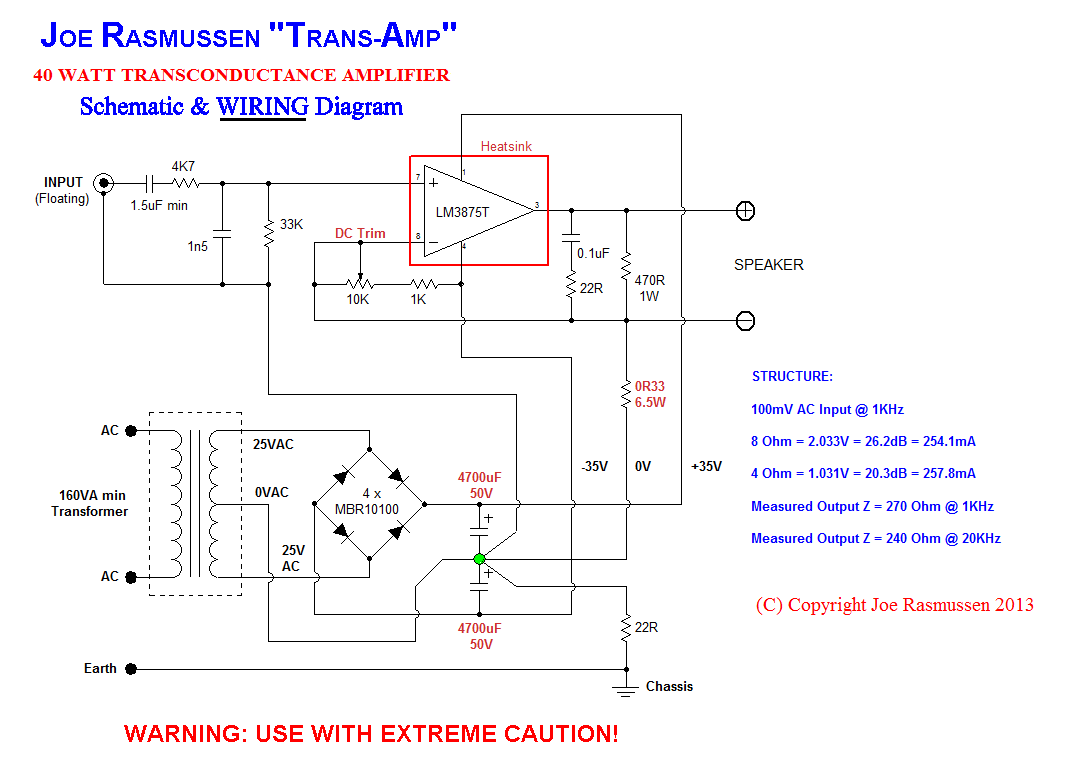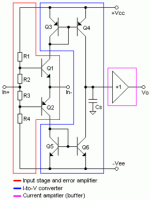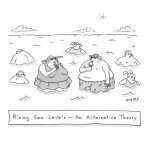as much as I hate the back and forth im gonna go ahead and mention if you do in fact believe different amps can have different sounds (all else the same) then why is it so hard to believe when others say they hear the differences?
I mean, it's one way or the other.....
if I say I prefer my Tahoe at highway speeds over my 3/4 ton dodge do I have to take a double blind test to prove it?
just the fact that I choose the cheaper supposedly lesser quality device over the other should be enough to quell sighted bias.
but then I suppose it's neither here nor there, I'm thinking even if I presented some sort of proof to this claim you'd find some fault with it.
I mean, it's one way or the other.....
if I say I prefer my Tahoe at highway speeds over my 3/4 ton dodge do I have to take a double blind test to prove it?
just the fact that I choose the cheaper supposedly lesser quality device over the other should be enough to quell sighted bias.
but then I suppose it's neither here nor there, I'm thinking even if I presented some sort of proof to this claim you'd find some fault with it.
if I say I prefer my Tahoe at highway speeds over my 3/4 ton dodge do I have to take a double blind test to prove it?
Absolutely not, if you are prepared to accept your preference could be different from mine.
Unless you claim a super car feeling ability, as much as you claim a super hearing ability, in which case you will be asked for proof.
claiming my yamaha sounds better than my parasound is hardly at super power level.
I've had several say they prefer the yamaha head to head also.
if you or anyone else preferred otherwise it's fine with me, but in the end I'm the one who decides.
I've had several say they prefer the yamaha head to head also.
if you or anyone else preferred otherwise it's fine with me, but in the end I'm the one who decides.
Amplifiers do sound different. If others choose to deny that, then not my problem and I have zero desire to prove them wrong. Life goes on...
Joe, you forgot to add the words
in my opinion
Without those words, your remarks sound high-handed and arrogant. In my opinion.
in my opinion
Without those words, your remarks sound high-handed and arrogant. In my opinion.
I showed same photo of unwanted HF from CD players over at B.Cordell's forum and got no argument as to the need for HF LP filtering on the amp inputs being helpful.
Used same reasoning about the need for designs to have, otherwise, low distortion over amps entire BW.
THx-RNMarsh
Used same reasoning about the need for designs to have, otherwise, low distortion over amps entire BW.
THx-RNMarsh
Joe, you forgot to add the words
in my opinion
Without those words, your remarks sound high-handed and arrogant. In my opinion.
I forgot nothing!
Two weeks ago I sent a new amplifier to Mike Lenehan of Lenehan Audio (Lenehan Loudspeakers) and when he listened to it, he called me back. I already knew what he was going to say: Amazing soundstage and location of instruments within it, also the impression of low distortion. And that is exactly what he said.
Mark, your comment indicates to me that you think that this is some kind of battleground. It may be to you, but I have moved on...
PS: To accuse me of being arrogant without even having met me... sounds arrogant. Sorry, but it does.
So, in your logic, a bad DAC (regular, stock, typical, to quote you) is a good reason the get a CFA power amplifier. And not a decent DAC, of course. Very interesting logic.
very interesting straw man argument.
-RNM
I showed same photo of unwanted HF from CD players over at B.Cordell's forum and got no argument as to the need for HF LP filtering on the amp inputs being helpful.
Hi Richard
Take a look at this:

An externally hosted image should be here but it was not working when we last tested it.
That LP on the input has a huge effect on the sound and with any source. Some amps definitely benefit from bandwidth limiting on the input, even with relatively clean sources, so 'dirty' HF from CD would make it even worse.
Attachments
Last edited:
Doesn't explain everything. I posted measurements and indeed even maths, that proved a very powerful point. It got ignored? Worse than that, it was pilloried. Then later I was accused of not posting measurements, then I strongly objected that I had and I re-posted them. This time I got some response and I noted that Scott had taken notice and starting to ask the correct questions, namely what I call the "0.1dB" challenge (I believe Scott knows what I am referring to) and acoustic measurement to further corroborate. I have been keeping that in mind and I will get back to him on that.
I believe what we are seeing is people putting ego before the "feelings" of others. At that point much gets lost in translation.
Just my Penny's worth.
PS: The "0.1dB" challenge is that a current change in dBSPL of a driver, its acoustic output measurable in dB level, between the driver being driven by a voltage sources versus a current source, the change is both measurable and calculable and they correspond. I had rounded the results, backed up by maths based on a variable Vre, to 1dB. Scott has asked if it is accurate to 0.1dB and I believe it is. If it is, then it proved that any impedance above the the DC, or Re, the resistance of the voice coil, is an actual impedance. It is a "back-EMF impedance" - a term that has become controversial to use here and I did not realise that it was, until Chris Anantech kindly explained it to me in a PM that it was putting people here off-side. That surprised me. Yet in the circles I move, the term did get accepted because the measurement shows it is and so does that maths.
On Blowtorch I was even confronted by someone saying that "even if may look like an impedance, it does not mean it is an impedance." For the sake of ego, an irrational argument like that was framed? Apparently so.
You killed-me ;-)
There is a lot of things involved in your post.
Let's concentrate on the speaker's question. Speakers, in their boxes, the room where they are playing, plus the amps that powered them, are very, very, very complex systems. So complex that I hardly believe some one could provide an accurate model of any of them . It is an incredible complex mix of mechanical and electrical resonances (the suspensions, the membranes, the chassis and the box itself, the filters, the cables impedances etc. Not to forget the acoustic ones from the room). Each one interacting with the others. Speakers are in the same time transducers, and microphones that generate currents in the speakers wires, Right ? Amp side, if they use feedback, and depending of the damping factor of the amp, non linear in frequency, those currents (that could be observed as well as voltages in the feed back line) will interfere with the signal itself, creating extra distortions. All those phenomena can be observed in the same time on the acoustical response curve (Awfully non linear) or when we measure the impedance curve of the assembly (but, there, the measuring conditions are totally different, because a high serial impedance has been added to the system, so we are not measuring the same system).
And, to add insult to injury, all those factors are constantly changing long and short term, with temperature and electrical levels.
And, to finish making us mad, the acoustic measurements are made with an instrument that is just as complex and quite unlinear, itself: a microphone.
So, in this big pile of unknowns, you are interested in one aspect of these phenomena (back-EMF) looking at them from a point of view: Impedance. And you try to give it a name by analogy. "back-EMF impedance".
Have I correctly understood and located / summarized your approach ?
Your "back-EMF impedance" name seems talkative enough to me (If i'm not totally mistaken) to not add a semantic controversy to the landscape.
It seems to me that, if one is interested in the question, it is advisable to respect all researches, to accept that one starts one's explorations at one end ( it is necessary to start somewhere) and to try to understand the meaning behind the words used, rather than quibbling from the start on their choice.
You are talking about egos? It seems to me that it goes further. Some are trying to communicate difficult things. And we do not all have the same language. They make efforts to transmit informations and observations, which, when it is human, is always a point of view (the observer modifies the object he observes). Others, instead of attempting an effort of understanding (definition of intelligence) are just shaking their personal dictionary. Or, worse, use it as a contending object ;-)
Last, I'm very amused with this endless quibble about the "level matched" question and what it supposes. That we are stupid enough to not make the difference between a level difference, and the 'character' of a sound ?
It is at the same time contempt and a confession of impotence: They would have a lot of trouble behind a mixing desk ;-)
Last edited:
So this is your indirect acknowledgement that you've made a "foot in mouth" post. The proper step would be to apologize to me even before typing "as much as", no?as much as I hate the back and forth im gonna go ahead and mention if you do in fact believe different amps can have different sounds (all else the same) then why is it so hard to believe when others say they hear the differences?
I would appreciate it if you can quote my post which showed such claim or implied that about amps, DACs or cables.I mean, it's one way or the other.....
I thought I asked about your listening test method, which you only displayed sarcasm as a reply.claiming my yamaha sounds better than my parasound is hardly at super power level.
I've had several say they prefer the yamaha head to head also.
if you or anyone else preferred otherwise it's fine with me, but in the end I'm the one who decides.
So I take it, Richard your topology of choice is based on the AD844 Analog Devices op-amp.
Interesting it is a good I/V converter and video amplifier........ 😉
No. I have no idea what the 844 topology is.
-RNM
I just looked it up. yes, that is the topology I would use. But isnt based upon that particular device.
Rather it is based upon the improved Marsh design ... by Comlinear around 1980. They got patent in 1982. I describe the origin in my
Linear Audio HPA article. As I stated in the article, I got a phone call at LLNL and talked to designer about the topology I had published. So, they did mod (Q3 and Q5) and got patent for just that addition. In 1982 with Elantec help they made first CFA IC based upon that patent. many derivations of its basic topology exist and cmos has taken it to Ghz range.
One such added change is the Diamond buffer or I/O stage which was really needed with small package dissipation limites where you cant run high idle currents.

Last edited:
Rather it is based upon the improved Marsh design ... by Comlinear around 1980. They got patent in 1982. I describe the origin in my
Linear Audio HPA article. As I stated in the article, I got a phone call at LLNL and talked to designer about the topology I had published. So, they did mod (Q3 and Q5) and got patent for just that addition. In 1982 with Elantec help they made first CFA IC based upon that patent. many derivations of its basic topology exist and cmos has taken it to Ghz range.
Now I get it. You claim the invention of the CFA, Comlinear and Elantec ripped you off, and 40 years later you are seeking recognition on a DIY Audio public forum.
That explains a lot, good luck with your mission 😀.
No one ripped me off of anything.
We talked AFTER I published the topology and before their patent. I dont care if they got a patent.
Since I published it, I couldnt patent it and was also working for university/Governement.
Nice try, again. Keep guessing. But published date is fact. That was my recognition. Dont need it Now.
For those interested, the details of the derivation of the topology is in Linear Audio publication.
Good luck peddling your theories.
-RNM
We talked AFTER I published the topology and before their patent. I dont care if they got a patent.
Since I published it, I couldnt patent it and was also working for university/Governement.
Nice try, again. Keep guessing. But published date is fact. That was my recognition. Dont need it Now.
For those interested, the details of the derivation of the topology is in Linear Audio publication.
Good luck peddling your theories.
-RNM
Last edited:
Now I get it. You claim the invention of the CFA, .
There is some confusion here, CFA and complimentary CFA are different things. The CFA idea dates from WWII and with bipolars from the early 70's (Barry Blesser) as I have noted earlier the extension to complimentary is trivial.
....meanwhile back in Kansas.
Attachments
Last edited:
There is some confusion here, CFA and complimentary CFA are different things. The CFA idea dates from WWII and with bipolars from the early 70's (Barry Blesser) as I have noted earlier the extension to complimentary is trivial.
That is correct. Except we are discussing a current-mode of operation and not FB point. You continue to miss this operational point. Never-the-less, The conversion to complimentary was necessary for me to eliminate coupling caps.. the goal originally. It was not difficult. trivial perhaps but not being done this way. thus, the patent.
this in turn lead me to the idea of dc servo as told to Walt Jung. Walt was the first to use to publish it in the way we all use it today. Again in an attempt to eliminate as many coupling caps as possible led to new creations which we all use today. the dc-servo is also 'trivial' to implement but was new and useful idea to solve a perceived problem, simplify design and reduce costs and size.
Sometimes these 'trivial' changes as you call them have profound affects in many ways. Same for a simple R placement for reducing speaker distortion. trivial? Really?
THx-RNMarsh
Last edited:
You killed-me ;-)
Strange and over-reacted, so I shall not respond in the same manner. We are indeed looking at a complex interface, indeed the interface between the amplifier and the loudspeaker is the most complex interface is the audio chain; the fact that we all need a speaker at the end of the chain means we cannot escape it. Why would you think that anything I said, in any way contradicts this obvious fact?
I don't mind criticism by those who understand the subject by which I am speaking of. Please, what I am saying is that you have misunderstood the subject.
Have I correctly understood and located / summarized your approach ?
Thank you for asking, that was honest of you. Alas, answer is no.
I believe Scott has an inkling, but it is up to him to correct me if he doesn't.
Last edited:
- Status
- Not open for further replies.
- Home
- Member Areas
- The Lounge
- John Curl's Blowtorch preamplifier part III

